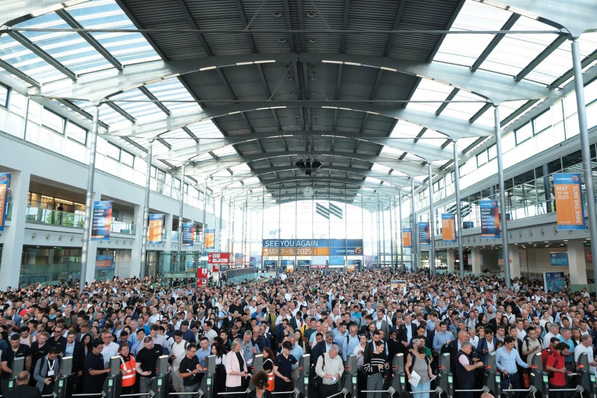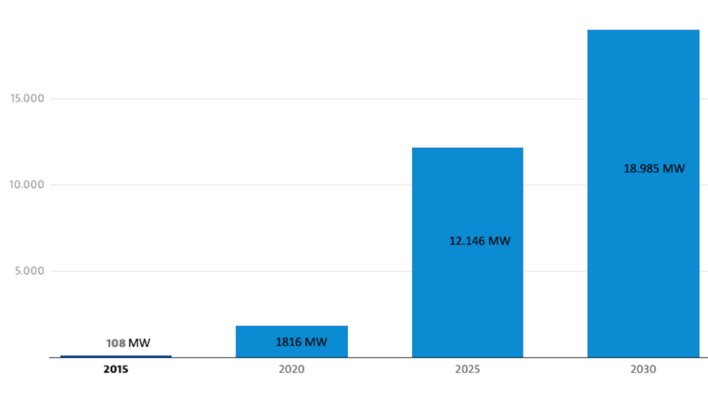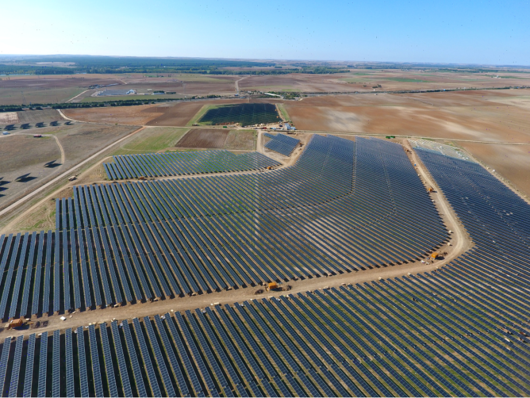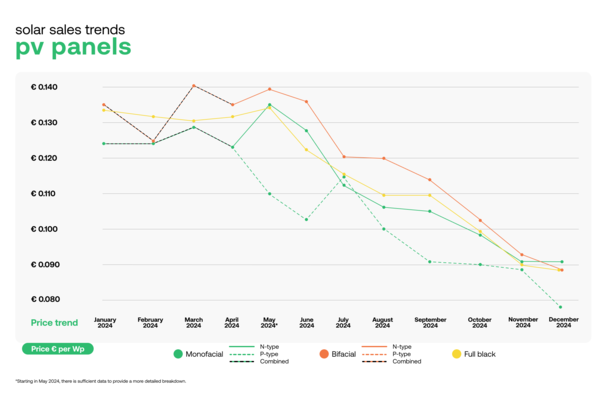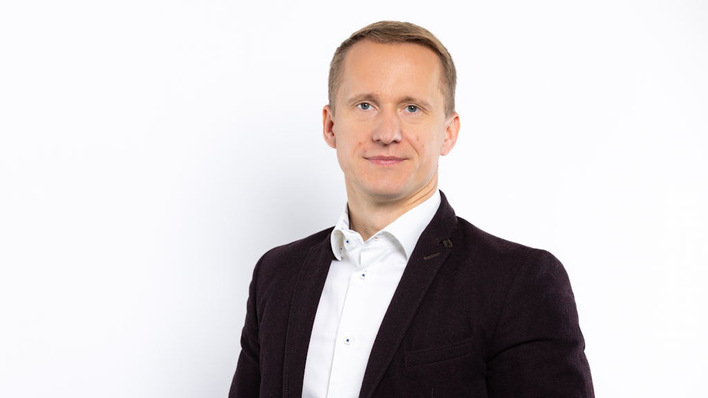PV modules with high-efficiency cells, reduced shading losses, lead-free modules and reusable transport units are but some of the innovations that have made it into the final round of the Intersolar Award.
Inverter manufacturers are also responding and adapting their products to high-output cell technology, transforming their inverters into ever-smarter all-rounders. And the pioneering products from the Intersolar AWARD 2022 finalists reflect that. The award pays tribute to pioneering technology and innovation. The winners will be honored on May 10, 2022, on the eve of The smarter E Europe, which encompasses the four energy exhibitions Intersolar Europe, ees Europe, Power2Drive Europe and EM-Power Europe and takes place from May 11–13, 2022, at Messe München.
The Intersolar Award puts innovative solutions from companies in the solar industry center stage. The innovation prize will be awarded in Hall 1 on May 10, 2022 at 6:00pm at the Internationales Congress Center München (ICM) in Munich, Germany. The ceremonies for The smarter E AWARD and the ees AWARD will take place at the same time – all under the umbrella of The smarter E Europe innovation hub. The awards honor innovative products and projects that play a key role in the success of the new energy world. The Intersolar AWARD finalists underscore solar industry trends.
High output, efficiency and sustainability in module technology
Lead-free PV modules made from crystalline silicon, reusable and collapsible transport units for PV modules consisting of recycled plastic: The products submitted for the Intersolar AWARD 2022 make it very clear that sustainability is an increasingly important factor when it comes to the manufacture and transport of products in PV module technology. Significant increases in efficiency thanks to module properties and design, systemic arrangement and cell interconnection technology are also driving sustainability. The development of these technologies has seen trends towards a significant reduction of shading losses combined with high module efficiency levels. When it comes to material technology, the nominated manufacturers are all leaning towards reducing or completely avoiding hazardous materials in modules. This represents another step towards making photovoltaics an integrated, sustainable method of power generation.
Broad spectrum of inverters and balance of systems
Inverter manufacturers are responding to the new high-output cell technologies by designing the DC string inputs to over 20 amps (A). Numerous devices currently have automatic arc detection integrated. The trend towards integrating more and more functions into the inverter is ongoing: for example, measurement of the current-voltage characteristic curve, automatic string disconnectors (SSLD), cloud-based smart energy management, charge/discharge functions for batteries, electric vehicles and consumers, back-up functions and systems for an uninterruptible power supply (UPS). Moreover, AC daisy chaining can be done with some inverters to reduce cable costs. For better grid integration, large inverters in particular can support weak grids.
Did you miss that? The Smarter E Award 2022: These are the finalists
The spectrum of products and innovation in the field of balance of system is just as broad. PV tracker systems are used in agrivoltaics in such a way that the weather conditions such as rain, hail or wind are adapted to the needs of the plants accordingly. Mounting systems and construction solutions for different roof styles, including roof sandwich elements, trapezoidal sheet metal roofs and green roofs, are presented. A universal mounting system with a flexible sealing plate for tiled roofs eliminates the need for installers to carry out time-consuming work on roof tiles. A new type of UV-stable encapsulation foil for PV modules increases the processing speed. An eye-catching feature is a tracking PV system reminiscent of a flower, with batteries and charging sockets for electric cars integrated into the support column in addition to the tracking technology.
The Intersolar AWARD 2022 finalists
FREECOLD SARL (France): The Mini-Tank MTR50 is a solar cooling system for smaller producers of milk or juices in sunny and even remote regions. Solar power is used directly in the system as a whole without conversion or storage for the cooling and high-quality storage of two milkings. The stable tank is light and easy to transport. For hygienic reasons, the tank interior is made of aluminum and has an automatic UV light disinfection unit. This keeps milk or juice fresh, even at high temperatures, until it is sold.
Gamesa Electric SAU (Spain): PROTEUS PV4700 is a central inverter for large photovoltaic parks that combines high efficiency with a particularly high power density. Its hybrid cooling system comprises a liquid circuit for highly utilized components and an air cooling system. This ensures that the inverter operates at high outdoor temperatures without power derating. Moreover, the central inverter only has low harmonic components in its output current and can even actively suppress certain harmonics, making it suitable for use at relatively weak grid connection points.
Huawei Technologies Co. LTD (China): The SUN2000 215 KTL is a high-output string inverter for free-standing installations. Its unique selling point is the implementation of algorithms for diagnosing defects and shading scenarios of the modules. This enables fault reporting and the identification of optimum operating points. Also noteworthy is its adaptability to various grid connection guidelines, thanks to which requirements for fault-ride-through capabilities and emission of harmonics are also met.
LONGi Solar Technology Co., Ltd. (China): The Onyx photovoltaic module couples the low degradation of gallium-doped silicon wafers with the high quality of a passivated back contact and “zero busbar technology”. This last feature significantly reduces the shading losses caused by the metal contacts on the front of the solar cell. The result is a high-performance PV module that offers an efficiency of up to 22.2 percent for the rooftop system market. For aesthetes, the Onyx is also available as a full-black variant with up to 21.7 percent efficiency.
M10 Solar Equipment GmbH (Germany): The SURFACE production facility interconnects solar cells using the shingle method. Solar cells cut into six strips are precisely connected to each other with a very small overlap of 1 to 1.2 millimetres by means of a conductive adhesive. The SURFACE system can also position the solar cells in a brick pattern. The result is the shingle matrix, which enables a slight curvature, as well as shading-tolerant modules. In combination with coloring techniques, this yields design potential for buildings and vehicles.
PVpallet, LLC (USA): The reusable and collapsible transport unit for PV modules is made of recycled plastic. These pallets are created from about 1,000 waste milk packs and their sizes can be changed. They allow modules of different sizes to be secured for transport so that damage is avoided. The pallets filled with modules can be stacked to save space. This eliminates the need for environmentally damaging disposable packaging for modules and prevents unnecessary waste.
REC Solar EMEA GmbH (Germany): Alpha Pure is the first mass-produced lead-free PV module based on crystalline silicon, making it compliant with the EU RoHS Directive on the “Restriction of the use of certain hazardous substances in electrical and electronic equipment”. Alpha Pure also offers up to 410 watts (W) of power at a size of 1.85 square meters, equivalent to an efficiency of 22.2 percent. This is attained by combining the tried-and-tested heterojunction solar cells with a wire-based interconnection technology with no gaps between the individual solar cells.
SMA Solar Technology AG (Germany): The Sunny Tripower X inverter was developed specifically for larger rooftop systems. With three MPP trackers, an input current of up to 24 A per tracker and a wide input voltage range, it affords a great deal of flexibility in the design of the PV system. The system manager integrated into the device can monitor several inverters together and can dynamically regulate the active and reactive power output, both in open-loop and closed-loop mode.
solarnative GmbH (Germany): The energy management system with its highly efficient JT 350 microinverters is a complete energy cloud solution for homeowners. It comprises power generation, storage, electric vehicle charging and consumers. High-frequency resonance technology and increasing the switching frequency up to two megahertz makes it possible to reduce the size and cost of capacitive and inductive components. This minimizes both losses and price. The result is a multifunctional micro inverter with a design and size that enable it to fit into the module frame.
Solarstone OÜ (Estonia): The Click-on aluminum frame system for building-integrated PV systems has a simple design, which also makes it cost-effective when it comes to materials. Three aluminum profiles can be cut to size and adapted for any module size; no screws or adhesives are necessary. The modules are shingled and installed in the roof or façade in rainproof manner. Standard modules of different depths are compatible with the system. (hcn)
Further information on the awards can be found at:
www.TheSmarterE-award.com
www.intersolar-award.com
www.ees-award.com


